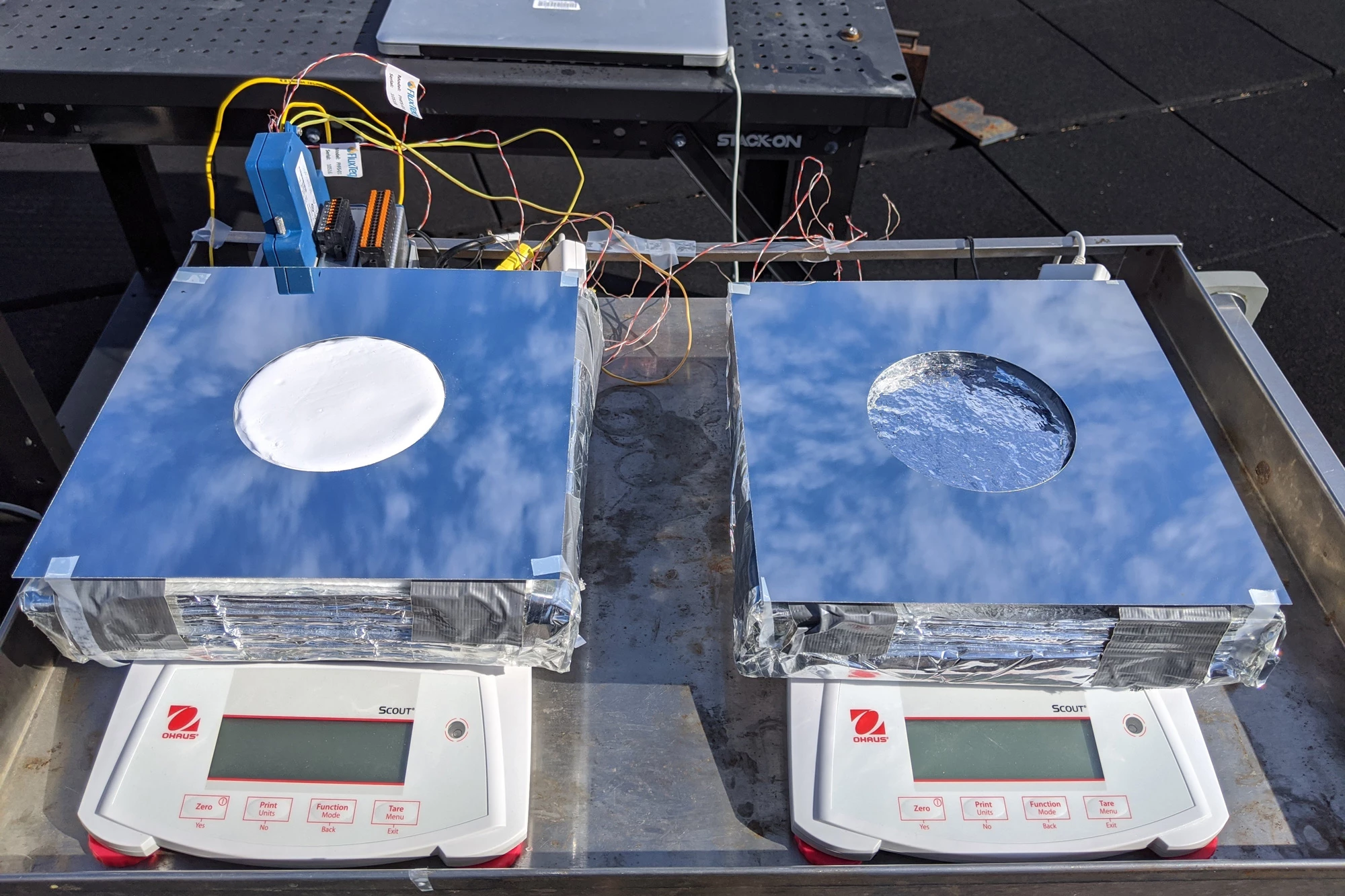In some of the world's hottest countries, where cooling systems are most needed, the infrastructure required to power such setups is often lacking. A new system could help in that regard, as it provides multiple cooling effects but uses no electricity.
Building on previous research, the MIT-designed system combines evaporative cooling, radiative cooling, and thermal insulation. It provides up to 19º F (10.5º C) of cooling from the ambient temperature, and takes the form of a panel made up of three layers of different materials.
That panel can be placed over/around an item that needs to be kept cool, such as a box containing perishable goods like food or medication. According to MIT, the technology could "permit safe food storage for about 40% longer under very humid conditions," or "triple the safe storage time under dryer conditions." It could also be used to cool the water utilized in air conditioners, allowing those devices to consume less power while staying just as effective.
The system's bottom layer is a mirror-like material, which reflects incoming sunlight. This keeps the infrared radiation within the sun's rays from heating the covered item. In the middle is a porous hydrogel, composed mostly of water. As that liquid water is heated, it evaporates into vapor which rises to the top layer.
That top layer is a type of aerogel, made up mostly of air pockets contained within polyethylene cavities. Both the water vapor and the reflected infrared rays are able to pass through the aerogel, providing evaporative and radiative cooling, respectively.
That said, the aerogel also serves as an insulating layer, keeping ambient heat from reaching the item below. Additionally, like the bottom layer, it's also very solar-reflective. Unfortunately, it's currently rather expensive to produce – further research will focus on methods of bringing down the aerogel's production costs.
The other materials used in the system are "readily available and relatively inexpensive." Maintenance would consist solely of adding more water to the hydrogel, which would reportedly only need to be done once every four days in very dry, hot environments, or only once a month in more humid regions.
The research is being led by Zhengmao Lu, Arny Leroy, Jeffrey Grossman, Evelyn Wang, Lenan Zhang and Jatin Patil. It is described in a paper that was recently published in the journal Cell Reports Physical Science.
Source: MIT




